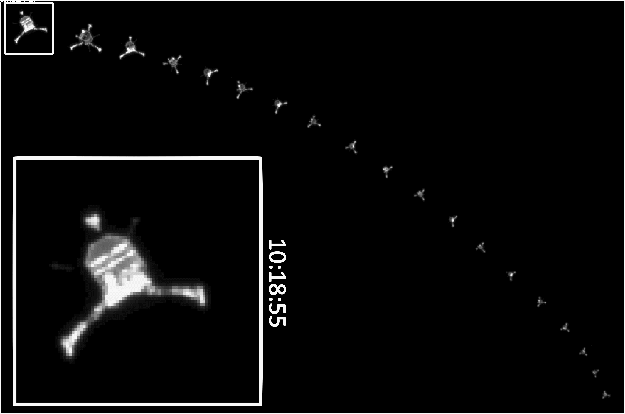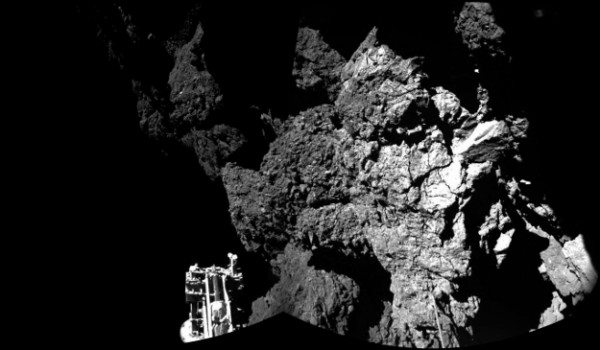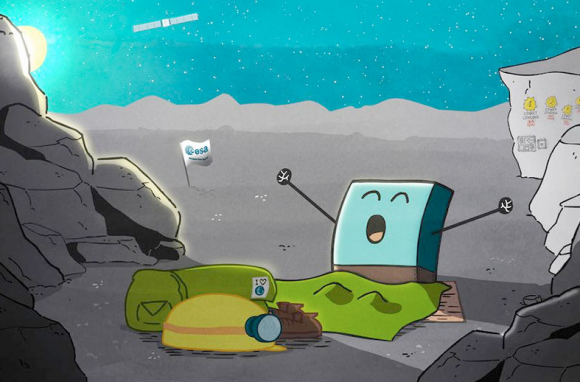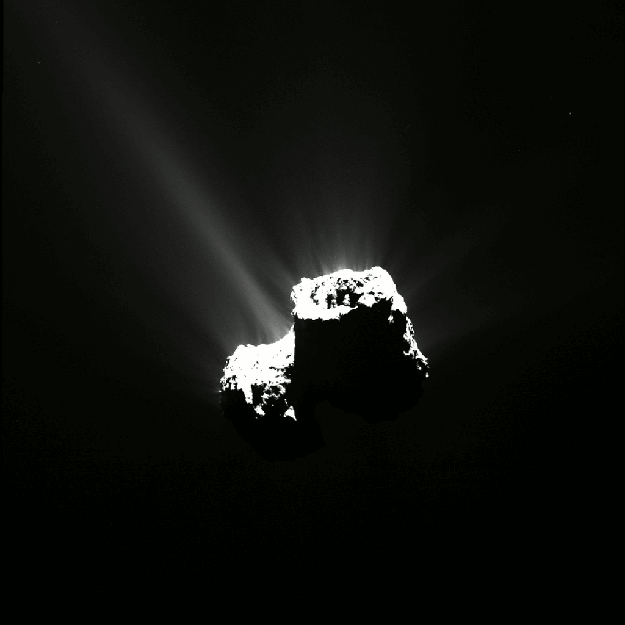
Scientists will no longer attempt to make contact with the Rosetta mission‘s comet lander Philae, according to a statement by the European Space Agency (ESA) on February 12, 2016.
Silent since its last call to mother ship Rosetta on July 9 of last year, the Philae lander is facing conditions on Comet 67P/Churyumov-Gerasimenko from which it is unlikely to recover.
Stephan Ulamec is Philae project manager at the German Aerospace Center (DLR). Ulamec said:
The chances for Philae to contact our team at our lander control center are unfortunately getting close to zero. We are not sending commands any more and it would be very surprising if we were to receive a signal again.
Philae’s team has carried out extensive investigations to try to understand the status of the lander, piecing together clues since it completed its first set of scientific activities after its historic landing on November 12, 2014.

A story with incredible twists and turns unfolded on that day. In addition to a faulty thruster, Philae also failed to fire its harpoons and lock itself onto the surface of the comet after its seven-hour descent, bouncing from its initial touchdown point at Agilkia, to a new landing site, Abydos, over 0.6 miles (1 km) away.
The precise location of the lander has yet to be confirmed in high-resolution images.
Once the lander had made its final touchdown, science and operations teams worked around the clock to adapt the experiments to make the most of the unanticipated situation. About 80% of its initial planned scientific activities were completed.
Listen to the thud of Philae landing on comet
In the 64 hours following its separation from Rosetta, Philae took detailed images of the comet from above and on the surface, sniffed out organic compounds, and profiled the local environment and surface properties of the comet.
But with insufficient sunlight falling on Philae’s new home to charge its secondary batteries, the race was on to collect and transmit the data to Rosetta and across 510 million kilometers of space back to Earth before the lander’s primary battery was exhausted as expected. Thus, on the evening of November 14-15, 2014, Philae fell into hibernation.
As the comet and the spacecraft moved closer to the sun ahead of perihelion on August 13, 2015 – the closest point to the sun along its orbit – there were hopes that Philae would receive enough sunlight to start warming up and wake up again.
On June 13, 2015, the lander did finally hail the orbiting Rosetta and subsequently transmitted housekeeping telemetry, including information from its thermal, power and computer subsystems.

After June 13, Philae made a further seven intermittent contacts with Rosetta in the following weeks, with the last coming on July 9, 2015. However, the communications links that were established were too short and unstable to enable any scientific measurements to be commanded.
Despite the improved thermal conditions, with temperatures inside Philae reaching 0°C, no further contacts were made as the comet approached perihelion in August.
However, the months around perihelion are also the comet’s most active. With increased levels of outflowing gas and dust, conditions were too challenging for Rosetta to operate safely close enough to the comet and within the 125 miles (200 km) where the signals had previously been detected from Philae.
The mission engineers think that failures of Philae’s transmitters and receivers are the most likely explanation for the irregular contacts last year, followed by continued silence into this year.
Another difficulty that Philae may be facing is dust covering its solar panels, ejected by the comet during the active perihelion months, preventing the lander from powering up.
Also, the attitude and even location of Philae may have changed since November 2014 owing to cometary activity, meaning that the direction in which its antenna is sending signals to Rosetta is not as predicted, affecting the expected communication window.

In more recent months, the comet’s activity has subsided enough to make it possible to approach the nucleus again safely and Rosetta has made repeated passes over Abydos. No signal has been received, however.
Attempts to send commands ‘in the blind’ to trigger a response from Philae have also not produced any results.
Sylvain Lodiot is ESA’s Rosetta spacecraft operations manager. Lodiot said:
The comet’s level of activity is now decreasing, allowing Rosetta to safely and gradually reduce its distance to the comet again.
Eventually we will be able to fly in ‘bound orbits’ again, approaching to within 10-20 kilometers [6 to 12 miles] – and even closer in the final stages of the mission – putting us in a position to fly above Abydos close enough to obtain dedicated high-resolution images to finally locate Philae and understand its attitude and orientation.
Matt Taylor, ESA’s Rosetta project scientist, said:
Determining Philae’s location would also allow us to better understand the context of the incredible in situ measurements already collected, enabling us to extract even more valuable science from the data.
Philae is the cherry on the cake of the Rosetta mission, and we are eager to see just where the cherry really is!
At the same time, Rosetta, Philae and the comet are heading back out towards the outer solar system again. They have crossed the orbit of Mars and are now some 220 million miles (350 million km) from the sun. According to predictions, the temperatures should be falling far below those at which Philae is expected to be able to operate.
Nevertheless, while hopes of making contact again with Philae dwindle, Rosetta will continue to listen for signals from the lander as it flies alongside the comet ahead of its own comet landing in September.
Patrick Martin, ESA’s Rosetta mission manager, said:
We would be very surprised to hear from Philae again after so long, but we will keep Rosetta’s listening channel on until it is no longer possible due to power constraints as we move ever further from the sun towards the end of the mission.
Enjoying EarthSky? Sign up for our free daily newsletter today!
Bottom line: In a February 12, 2016 statement, the European Space Agency (ESA) said that scientists will no longer attempt to make contact with the Rosetta Mission’s comet lander Philae, which is currently sitting on Comet 67P/Churyumov-Gerasimenko, likely covered in dust and unable to function due to the extreme cold.











